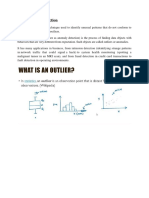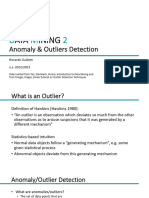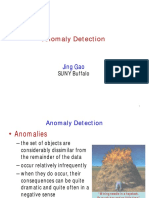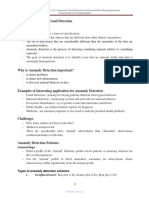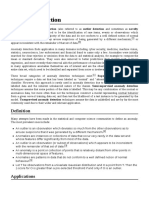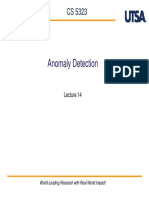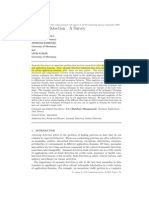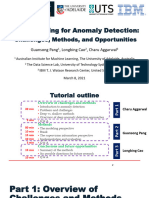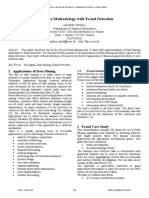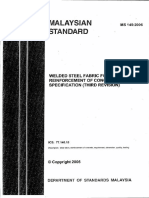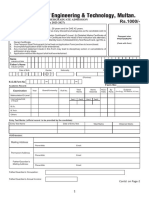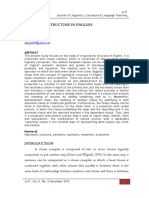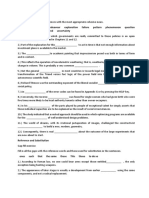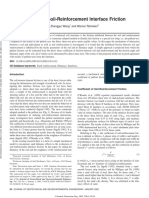0% found this document useful (0 votes)
23 views72 pagesAnomaly Detection and Curve Fitting
The document discusses anomaly detection, which identifies patterns in data that deviate from expected behavior, often linked to critical real-life issues like fraud and cyber intrusions. It outlines various methods for detecting anomalies, including supervised, semi-supervised, and unsupervised learning approaches, as well as techniques like k-nearest neighbors and Bayesian probability. Additionally, it covers curve fitting and regression as a means of modeling data relationships, emphasizing the importance of finding the best fit for experimental data.
Uploaded by
dumi dlamCopyright
© © All Rights Reserved
We take content rights seriously. If you suspect this is your content, claim it here.
Available Formats
Download as PDF, TXT or read online on Scribd
0% found this document useful (0 votes)
23 views72 pagesAnomaly Detection and Curve Fitting
The document discusses anomaly detection, which identifies patterns in data that deviate from expected behavior, often linked to critical real-life issues like fraud and cyber intrusions. It outlines various methods for detecting anomalies, including supervised, semi-supervised, and unsupervised learning approaches, as well as techniques like k-nearest neighbors and Bayesian probability. Additionally, it covers curve fitting and regression as a means of modeling data relationships, emphasizing the importance of finding the best fit for experimental data.
Uploaded by
dumi dlamCopyright
© © All Rights Reserved
We take content rights seriously. If you suspect this is your content, claim it here.
Available Formats
Download as PDF, TXT or read online on Scribd
/ 72



